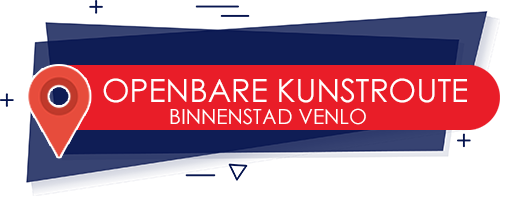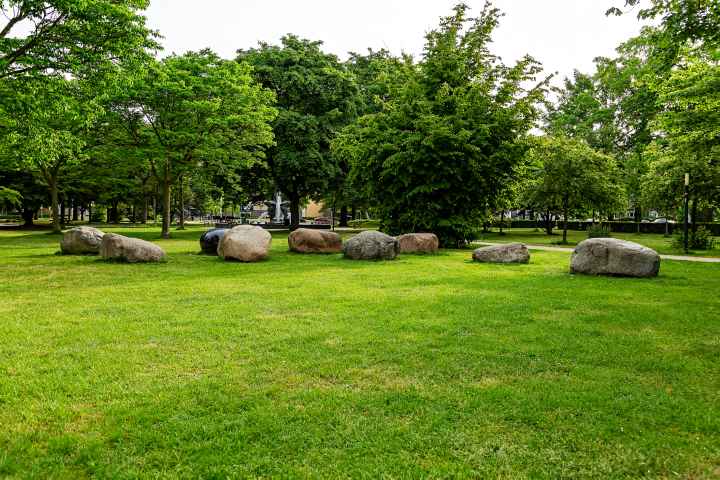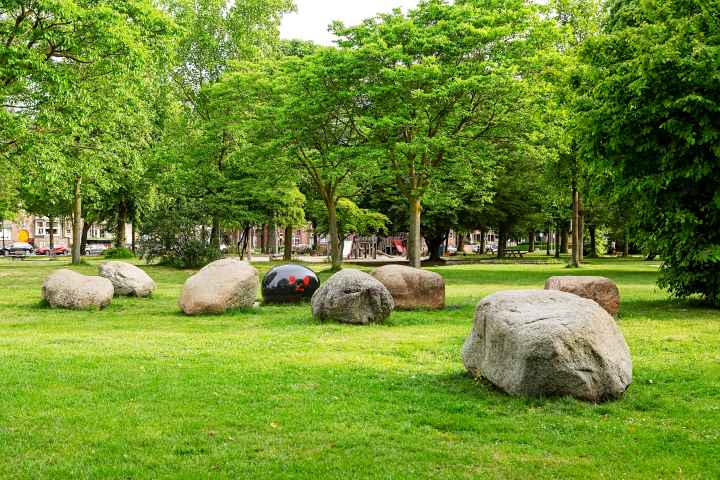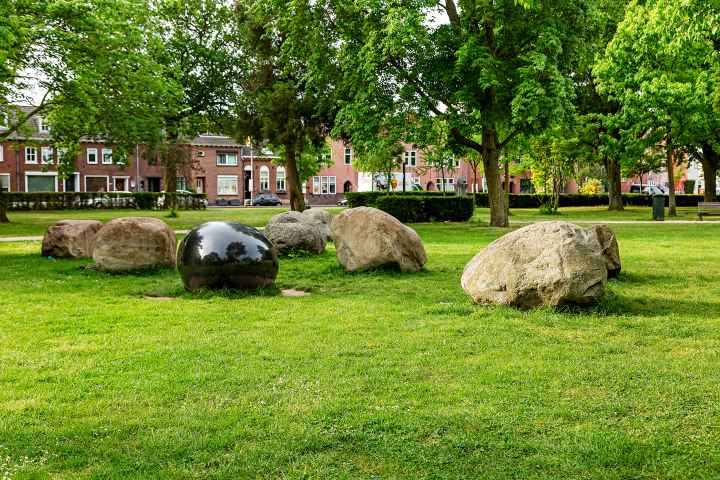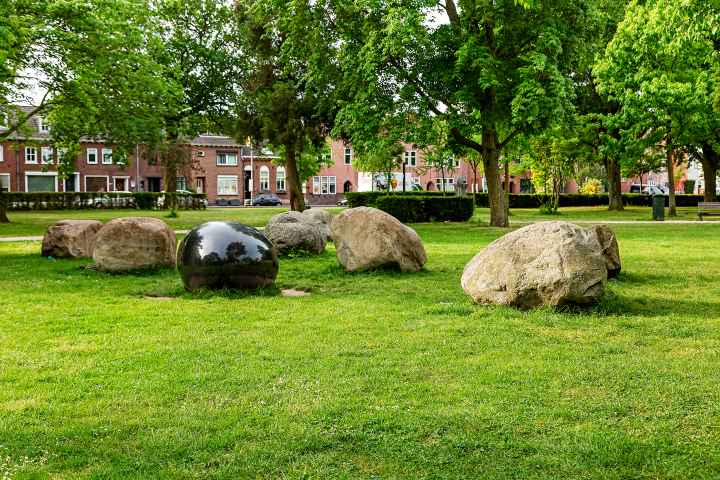Boulders: Keiharde Stilte
Juliana Park
Boulders: Keiharde Stilte – Adri Verhoeven
Keiharde Stilte was a temporary sculpture route through Venlo, organised by Museum van Bommel van Dam, from May 2009 until March 2010. At various places in the centre of Venlo, you would come across rough, unprocessed boulders and round, smoothly polished specimens. In total, the sculpture route showed fourteen stone formations, all of which were directly connected to the various locations. The identity of the stones remained shrouded in mystery; physical traces of sculptor Verhoeven were barely visible, the form simple. Stone, one said at that time, is a symbol for sustainability, solidity and foundation and is in many cultures seen as the symbol of human and divine power.
Initially, it was the intention that the sculpture route would completely disappear from Venlo in March 2010. The many positive reactions to the route made the municipality decide to purchase one of the stone formations. The choice was left to the Venlo population and the work purchased would remain in its original location. They eventually chose the formation in Julianapark.
The artist Adri Verhoeven
Although he initially wanted to become a painter, Adrianus Cornelis (Adri) Verhoeven (Berkel-Enschot, 1952) decided to eventually work as a sculptor because of his fascination with stone. He was trained at the Royal Academy of Art and Design in ‘s-Hertogenbosch (1969-1975) and shortly afterwards, in 1976, opened his own studio.
Verhoeven makes sculptures using different kinds of stone, in which he seeks out contrasts by combining stones that have been roughly hewn or, on the contrary, made shiny by polishing. He has also created temporary sculpture routes, such as in Venlo, for various other Dutch locations.
The Juliana Park
A group of men playing petanque, young people playing, people lazing in the shade of a tree or sitting on a bench reading a book. As soon as the weather gets good, Julianapark is a place of meeting. For example, during the festivals that take place there in the summer months, such as the culinary event Lekker Venlo, dance event Stereo Sunday and the now famous Zomerparkfeest. The spot we now know as Julianapark, adjacent to Keulsepoort, is the spot where one of the four city gates in Venlo’s fortifications once stood.
Just outside the Keulsepoort, until the nineteenth century, was a location called the Elysian Fields. From 1875, it was the location of the shunting yard of the Köln-Mindener Bahn, an international railway connection between Hamburg and Paris with a stop in Venlo. Therefore, in that period, the road west of the park was called Hamburgersingel. After the war, it was changed to Deken van Oppensingel, after Dean Jules van Oppen, who died during the war as a resistance fighter in Camp Vught.
The people of Venlo also called the road Ponywaeg. There could be two explanations for this. In line of the road there used to be the Pope factory. The young ladies who worked there were the first in Venlo to have their hair cut in a Pony style. Another explanation could be that the hussars – stationed in Venlo between 1816 and 1913 – took their horses (Ponies) out on the Hamburgersingel.
In 1971, the Van Bommel van Dam Museum opened its doors in Julianapark, nowadays located in the former post office at the Keulsepoort. Since 2000, the Limburgs Museum has also been part of the park. After the departure of van Bommel van Dam, Foodhall MOUT settled in the drastically renovated museum building in 2022.
In Julianapark there are several works of art and also some parts of the former fortress walls, of which a part has been preserved underground.
